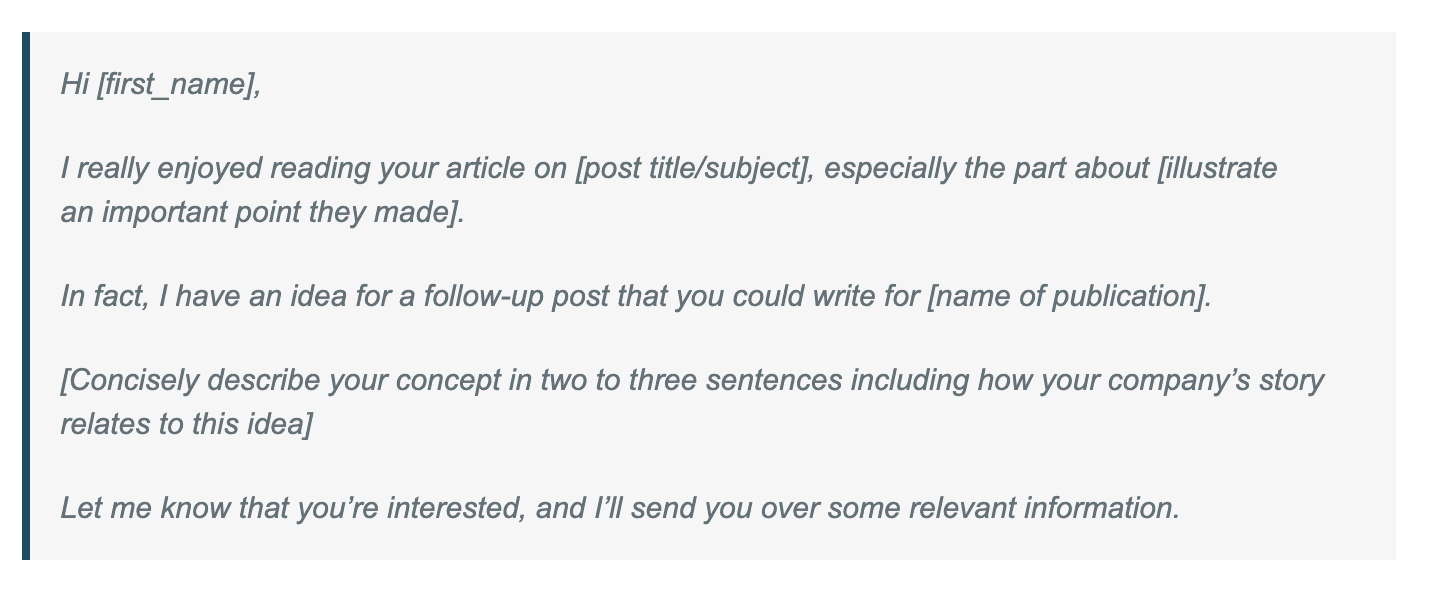If you want to get your blog or website out there, then you may have considered guest posting. Guest posting is when you publish content on other blogs to drive more traffic to your site and reach other essential marketing goals.
Small businesses that blog receive 126 percent more lead growth than those that don’t. It’s a great way to show readers your knowledge and build a thriving business. And when you share your expertise on another brand’s blog, you automatically boost your conversions.
But guest posting, especially as a new blogger or writer, is no easy feat. Being featured on popular websites is even more difficult to do. However, if you craft an excellent pitch, you can increase your chances of getting published and bringing attention to your site.
Why Guest Post?
Around 60 percent of bloggers publish their content on other blogs because of all the benefits it brings their businesses, which include the following:
Grows Your Audience
If you publish content on well-known blogs, you’re exposing your content to hundreds, maybe even thousands, of readers in your target market. It’s easier to organically grow your audience when you entice them with high-quality content relevant to their interests.
Drives Quality Traffic
People who visit your blog from your guest posts are already part of your target audience, which means you’re driving quality traffic to your site. The more relevant traffic you bring in, the more engagement and conversions you’ll see.
Boosts Engagement
More people see your content when you post on other sites. When they hop over to yours, it’ll boost user engagement and collect data about your audience. You can use this information to refine your content marketing and create strategies that work best for your target readers.
Builds Brand Credibility
If you’re new to blogging or your industry, then you know how challenging it is to build a name for yourself among the competition. Around 63 percent of readers perceive blogs with multiple authors to be more credible. It tells them you’re worth their time and engagement.
Before other blogs feature you on their websites, you first need to create and send an optimized guest post pitch. This is an email you send to publications with your topic idea in the hopes that they’ll choose to work with you and publish your piece.
Now that we know why guest posting is essential for your own blogging efforts, let’s dive into a few tips to help you get started with your pitch.
Research the Publication
Before you can start crafting your pitch, you need to research the publications you plan on submitting to. Each blog has different writing guidelines that you must follow in your pitch to show publishers you read and followed their instructions. If not, your email has a solid chance of ending up in the trash.
Websites that accept guest posts normally have an entire page dedicated to their guest post submission guidelines. Some go into great detail about the specifics of their requirements while others are more lenient about their processes.
Check out this example from Invesp’s guidelines:

Check out their other blog posts and search their archives for examples of the content they’re looking for. You’ll get a feel for their writing style and voice which will help you write an email pitch they can’t resist.
Regardless of the blog you write for, make sure you’re guaranteed a link back to your site. If not, readers have nowhere to navigate to and no one will see your content. The point of guest posting is to lead users back to your website for added engagement. If they don’t promise a quality backlink, then stay away from that publication.
Ensure Proper Formatting
Even the simplest error can turn prospects away from accepting your pitch. You want to come across as professional, but that’s a challenge if you don’t know how to format your emails.
To ensure proper formatting, make sure to:
- Keep your pitch short. Editors receive tons of guest pitches and they don’t want to read page after page about your idea. Two or three paragraphs will do.
- Use clear, concise, well-constructed sentences. If you can say it fewer words, then eliminate extra text. Get your point across smoothly and swiftly.
- Stick to one font and font size.
- Break up text using whitespace and make it easier to engage with your email.
When writing your pitch, use the first paragraph to introduce yourself. Then, mention something relevant about their blog or brand, such as a post you enjoyed.
Use the second paragraph to explain your idea. Include a short summary so they understand your angle and why it would fit in well with their vision.
This template gives you a good idea of how your email should look when you’re done:

Use Personalization
Receiving responses from your email pitches is a numbers game. The more pitches you send, the likelier your chances are of receiving a response that leads to a published post.
But how can you increase your chances of blogs emailing you back? The answer is through personalization.
Blogs that accept guest posts, especially the popular ones, receive tons of pitches a day from aspiring writers and bloggers who want to build their brand. Many of those pitches are copied and pasted and show no effort by the writer. By personalizing each email you send, you stand out from the crowd and show prospects you’re serious about them featuring you on their blog.
If there’s a blog you really want to write for, then start engaging with their content. Make it a habit to leave comments on new blog posts saying what you enjoyed about them or what helped you. It gives the blog owner a warm introduction to your brand and could be what lands you an accepted pitch.
You can personalize your email pitch by:
- Writing a different email for each publication. You don’t necessarily have to start from scratch each time, but take the time to make each pitch sound different from the next.
- Addressing the person by their name. Blogs usually have easily accessible information about who you’re emailing, so finding it shouldn’t be difficult. Or, the name might be in the email address.
- Including any information that shows you’re familiar with their blog and its guidelines. You might reference a recent blog post and share what parts you found most helpful, for example. If they know you pay attention to their content, then they’re likelier to pay attention to you.
Your Turn
A lot goes into creating a guest post pitch that grabs the receiver’s attention and pushes them to publish you. You need to show that you know your stuff and can provide value to your audience on any platform. By taking the time to research the publications, use personalization, and ensure proper formatting, you bring yourself closer to getting published as a guest writer. How will you create a winning guest post pitch?
hands typing on laptop -DepositPhotos


